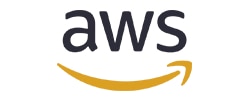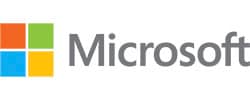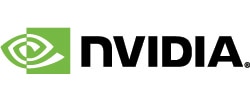February 07, 2024
Optimizing Outcomes as Connected Care Evolves
By connecting technologies across workflows, healthcare providers can improve the experiences of patients and clinicians.
The ways that healthcare providers use technology continue to evolve. Connected care solutions such as telehealth and remote patient monitoring tools have become much more widely implemented in recent years, enabling clinicians to deliver care and connect with patients more efficiently and seamlessly. The next step in this evolution requires providers to connect these tools throughout their workflows, to back-end systems as well as security solutions.
As healthcare providers find new ways to implement connected care, they must be strategic. They need to understand how deploying new tools such as automated solutions powered by artificial intelligence will affect the experience of patients and clinicians, and they must plan to overcome obstacles such as staffing shortages and cultural resistance. Providers also must find ways to optimize the technology tools they use, such as software that can be integrated throughout entire workflows and endpoint devices that bring new capabilities to clinicians. Finally, these solutions must be secure, protecting the valuable data of patients and providers.
How can your organization maximize the value of connected care?
The ways that healthcare providers use technology continue to evolve. Connected care solutions such as telehealth and remote patient monitoring tools have become much more widely implemented in recent years, enabling clinicians to deliver care and connect with patients more efficiently and seamlessly. The next step in this evolution requires providers to connect these tools throughout their workflows, to back-end systems as well as security solutions.
As healthcare providers find new ways to implement connected care, they must be strategic. They need to understand how deploying new tools such as automated solutions powered by artificial intelligence will affect the experience of patients and clinicians, and they must plan to overcome obstacles such as staffing shortages and cultural resistance. Providers also must find ways to optimize the technology tools that they use, such as software that can be integrated throughout entire workflows and endpoint devices that bring new capabilities to clinicians. Finally, these solutions must be secure, protecting the valuable data of patients and providers.
How can your organization maximize
the value of connected care?

Healthcare organizations made unprecedented investments in technology during the COVID-19 pandemic, rapidly rolling out telehealth tools and other connected care solutions that enabled patients and providers to connect while staying safe.
Although the use of these connected care solutions has declined somewhat from a pandemic peak, they are still being used in much larger numbers than before 2020, and many patients have come to rely on virtual options to conveniently access the care that they need — especially patients in rural areas, who may otherwise be forced to travel long distances to see specialists. Providing effective, quality connected care not only helps healthcare organizations to attract patients and clinicians but can also lower costs and improve outcomes for patients.
During the pandemic, hospitals and clinics raced to stand up connected care solutions as quickly as possible, but many of these systems remain disconnected from healthcare organizations’ larger IT environments. This may limit effectiveness, as interoperable systems and data sharing are becoming keys to success in the healthcare sector. Also, connected care solutions that are disconnected from organizations’ cybersecurity tools and processes may expose vulnerabilities that hackers can exploit. To ensure quality care and data security, healthcare organizations must unify their IT environments and thoughtfully deploy cybersecurity tools and frameworks such as mobile device management and zero trust.
92%
The percentage of physicians who say that ease of use is important to ensuring patient access to telemedicine
Source: Doximity, 2023 State of Telemedicine Report, June 2023
It is also critical for healthcare and IT leaders to keep up with the ongoing evolution of connected care. In addition to telehealth solutions, which facilitate direct patient-to-practitioner interaction, healthcare providers are making progress in the use of remote patient monitoring and artificial intelligence tools. With RPM, clinicians can extend their reach beyond the traditional bounds of medical facilities, keeping tabs on important patient data. And with the help of AI, they can rapidly analyze this data to arrive at informed insights (and even predictions) about patient outcomes. Together, these technologies form a connected ecosystem that can transform care, making it more proactive, personalized and patient-centric.
Financial pressure is one of the top concerns that healthcare organizations face. Connected care can help reduce the cost of care delivery. Also, grant funding from programs such as the Healthcare Connect Fund can provide financial assistance to healthcare organizations, enhance broadband connectivity, improve community outreach and ultimately provide telehealth to more patients who need it.
Healthcare organizations made unprecedented investments in technology during the COVID-19 pandemic, rapidly rolling out telehealth tools and other connected care solutions that enabled patients and providers to connect while staying safe.
Although the use of these connected care solutions has declined somewhat from a pandemic peak, they are still being used in much larger numbers than before 2020, and many patients have come to rely on virtual options to conveniently access the care that they need — especially patients in rural areas, who may otherwise be forced to travel long distances to see specialists. Providing effective, quality connected care not only helps healthcare organizations to attract patients and clinicians but can also lower costs and improve outcomes for patients.
During the pandemic, hospitals and clinics raced to stand up connected care solutions as quickly as possible, but many of these systems remain disconnected from healthcare organizations’ larger IT environments. This may limit effectiveness, as interoperable systems and data sharing are becoming keys to success in the healthcare sector. Also, connected care solutions that are disconnected from organizations’ cybersecurity tools and processes may expose vulnerabilities that hackers can exploit. To ensure quality care and data security, healthcare organizations must unify their IT environments and thoughtfully deploy cybersecurity tools and frameworks such as mobile device management and zero trust.
92%
The percentage of physicians who say that ease of use is important to ensuring patient access to telemedicine
Source: Doximity, 2023 State of Telemedicine Report, June 2023
It is also critical for healthcare and IT leaders to keep up with the ongoing evolution of connected care. In addition to telehealth solutions, which facilitate direct patient-to-practitioner interaction, healthcare providers are making progress in the use of remote patient monitoring and artificial intelligence tools. With RPM, clinicians can extend their reach beyond the traditional bounds of medical facilities, keeping tabs on important patient data. And with the help of AI, they can rapidly analyze this data to arrive at informed insights (and even predictions) about patient outcomes. Together, these technologies form a connected ecosystem that can transform care, making it more proactive, personalized and patient-centric.
Financial pressure is one of the top concerns that healthcare organizations face. Connected care can help reduce the cost of care delivery. Also, grant funding from programs such as the Healthcare Connect Fund can provide financial assistance to healthcare organizations, enhance broadband connectivity, improve community outreach and ultimately provide telehealth to more patients who need it.
The State of Connected Care
62%
The percentage of U.S. residents expected to use telehealth services in 20241
Source: 1viosapp.com, “62% of Americans Will Use Telemedicine in 2024,” Sept. 6, 2023
28%
The percentage of patients who say that they choose telehealth over in-person appointments due to convenience2
Source: 2J.D. Power, “2023 U.S. Telehealth Satisfaction Study,” September 2023
80%
The percentage of telehealth users in 2022 who had four or fewer telehealth visits3
Source: 3Trilliant Health, “Trilliant Health 2023 Trends Shaping the Health Economy,” September 2023
46%
The decline in total telehealth visits from a peak in early 2020 to late 20223
Source: 3Trilliant Health, “Trilliant Health 2023 Trends Shaping the Health Economy,” September 2023
The State of Connected Care
62%
The percentage of U.S. residents expected to use telehealth services in 20241
Source: 1viosapp.com, “62% of Americans Will Use Telemedicine in 2024,” Sept. 6, 2023
28%
The percentage of patients who say that they choose telehealth over in-person appointments due to convenience2
Source: 2J.D. Power, “2023 U.S. Telehealth Satisfaction Study,” September 2023
80%
The percentage of telehealth users in 2022 who had four or fewer telehealth visits3
Source: 3Trilliant Health, “Trilliant Health 2023 Trends Shaping the Health Economy,” September 2023
46%
The decline in total telehealth visits from a peak in early 2020 to late 20223
Source: 3Trilliant Health, “Trilliant Health 2023 Trends Shaping the Health Economy,” September 2023
- STRATEGIES FOR CONNECTED CARE
- CONNECTED CARE: BENEFITS AND CHALLENGES
- FOUNDATIONAL TOOLS FOR CONNECTED CARE
Across the country, especially in rural areas, telehealth has significantly expanded options and accessibility for patients and clinicians. Videoconferencing and collaboration platforms, integrated with electronic health record (EHR) systems make it easy for patients to connect with general practitioners and specialists who may not be available in their immediate areas. Clinicians in rural settings can use telehealth to consult with specialists remotely, bringing the expertise of larger health systems to underserved areas.
Remote Patient Monitoring: RPM, which leverages videoconferencing and collaboration platforms and connected medical devices to manage at-home care, is becoming a more important component of healthcare offerings. Connected care support for chronic disease management, medical management and care coordination are among the top use cases for telehealth.
Virtual Rounding: This practice lets clinicians see patients without visiting their rooms in person. It saves doctors time and effort by enabling them to check in with patients quickly and easily while also maintaining social distancing practices that help prevent the spread of transmissible diseases.
Click Below to Continue Reading
Telesitting and Virtual Nursing: This enables a single person or AI-powered fall prevention to monitor multiple patients (for example, to prevent them from getting out of bed against physicians’ orders). It is far more efficient than having to staff one person for each room, and it allows hospitals to assign personnel to other valuable work.
eICUs: Providing care to the most at-risk patients, an electronic intensive care unit is supported by clinical care command centers and in-room solutions, which extend critical care staffing and expertise and facilitate data-driven care. This application is particularly valuable for hospitals with staffs that are stretched thin by heavy caseloads, or for rural facilities without certain specialties.
Telestroke Care: Time is of the essence when healthcare professionals are dealing with a patient who may have had a stroke. Connected care for these patients enables on-call neurologists to quickly determine if a stroke has occurred and institute appropriate protocols promptly and effectively.
Artificial Intelligence: AI solutions play an important role in connected care for use cases such as diagnostics, data analysis and data management in EHRs. Healthcare organizations must continue to explore AI solutions as the technology evolves, balancing the desire to improve productivity and efficiency with the need to protect privacy and prevent errors.
Healthcare providers seek to deliver successful digital experiences for both clinicians and patients. Achieving this objective requires them to overcome some common challenges.
The Connected Care Experience
Ultimately, the goal of any connected care initiative is to provide a great experience that leads to better healthcare outcomes and improved satisfaction for both providers and patients. In fact, telehealth can be a key factor in helping organizations to achieve goals that are aligned with healthcare’s “quadruple aim”: an excellent patient experience, improved population health, lower costs and a better work-life balance for healthcare providers.
The outcomes of successful connected care initiatives tend to have multiple benefits that allow healthcare organizations to make progress on two or more of these aims at once. For instance, telehealth solutions reduce the need for physicians to travel to smaller clinics and hospitals for outreach work, potentially improving satisfaction for doctors and also reducing travel costs and increasing access to care. These technologies also increase the frequency of interactions between patients and providers and save patients significant travel time on initial visits and follow-ups. And by extending critical specialty care to rural areas and other regions that lack access, connected care can both provide a better experience to individual patients and improve health outcomes for underserved populations.
Overcoming Challenges
Despite its potential to deliver extraordinary benefits to patients, clinicians and healthcare organizations, connected care is not without challenges. Most obviously, large technology initiatives can both burden IT staffs and strain budgets. For many healthcare organizations, trusted third-party IT partners provide important guidance as they design solutions and assistance as they implement them.
Culture management is another key challenge. Because patients and clinicians often resist change, healthcare organizations should enact policies that encourage users to adopt new tools and also provide the training and support that they need to be successful. As they plan to use new technologies, healthcare systems must also consider additional factors, such as reimbursement policies and patient privacy regulations.
Many healthcare organizations are already facing critical staffing shortages that will make it even more challenging to establish and support new connected care technologies. Leaders at these organizations might consider staff augmentation services or managed services, which can help them solve the challenges they face in deploying and supporting their connected care environments.
Click Below to Continue Reading
How Connected Care Improves Outcomes
62%
The percentage of patients who say that the availability of telemedicine increases the likelihood of them seeking care that they would otherwise delay1
37%
The percentage of physicians who report that telemedicine has improved patients’ adherence to treatment plans, compared with just 2 percent who say that telemedicine decreases adherence2
14.5%
The 30-day readmission rate, in one study, for patients whose follow-up appointments were conducted via telehealth — nearly identical to the 14.7 percent readmission rate for patients with in-person follow-up appointments3
76%
The percentage of telemedicine patients who say the practice has improved their access to healthcare2
39%
The percentage of patients who say telemedicine has improved their overall care — compared with just 6 percent who say it has worsened care2
Sources: 1viosapp.com, “62% of Americans Will Use Telemedicine in 2024,” Sept. 6, 2023; 2Doximity, “2023 State of Telemedicine Report,” June 2023; 3ncbi.nlm.nih.gov, “Impact of early telemedicine follow-up on 30-Day hospital readmissions,” May 22, 2023
Effective tools — both hardware and software — enable healthcare professionals to deliver optimal care to patients in a connected environment.
Software Platforms: For many organizations that escalated connected care rapidly in 2020, the most valuable investment to support the refinement and expansion of these services is an end-to-end platform. Typically provided via Software as a Service, these platforms house connected care applications and facilitate workflows.
These platforms also facilitate ancillary activities that support connected care, such as making appointments, ordering labs and other tests, sharing test results, ordering and following up on medication, and logging patient information. This makes workflows more efficient, which can help increase adoption by clinicians.
Integration, particularly with EHRs, is a best practice for successful connected care delivery. EHR integration means that the videoconferencing and collaboration platform primarily serves to provide the virtual meeting space, while the clinician conducts the visit and manages patient information within the EHR.
Click Below to Continue Reading
Endpoint Devices: Clinicians and patients can join virtual sessions with simple setups via mobile phones, tablets and laptops. However, many clinicians prefer more robust arrangements, such as multiple monitors that make it easier to simultaneously use the videoconferencing platform, enter notes into the EHR, and consult images or other materials.
Audiovisual technologies can enhance the quality of the experience significantly, through stand-alone cameras and microphones that allow physicians to create a studio from which to provide care. For other connected care services, such as eICUs and telesitting, digital cameras are essential for staff to remotely observe several patients at once.
In eICU rooms, caregivers in a command center can observe patients on multiple monitors via high-definition pan-tilt-zoom cameras in patient rooms. Locating clinicians within the command center not only extends the reach of critical care staff but also allows them to make more data-driven decisions about care — for example, using platforms that analyze data from several sources to identify trends and alert clinicians when patients need attention.
Security: Organizations face multiple cybersecurity challenges: new threats, an expanded attack surface and new vulnerabilities, including remote employees and the rapid expansion of connected care. For cybercriminals seeking to sell data on the dark web, medical records are among the most lucrative targets. Hackers have adapted their attacks to current healthcare practices. In addition to mounting increased phishing attacks, they seek to exploit vulnerabilities in the devices, networks and software used for telehealth services.
The risks are especially high when employees are using disparate tools and inconsistent procedures in programs that do not have strong security controls. In addition to deploying the appropriate security solutions, organizations must ensure that every employee is well trained in security best practices, particularly on how to identify and avoid phishing attacks.
Connected care should be subject to data encryption at rest and in transit. Remote monitoring devices, together with devices used for telehealth, virtual rounding and eICUs, should have regular software updates to ensure that patches are installed appropriately. Networking controls and best practices, such as multifactor authentication, should be in place for all connected care solutions.
- STRATEGIES FOR CONNECTED CARE
- CONNECTED CARE: BENEFITS AND CHALLENGES
- FOUNDATIONAL TOOLS FOR CONNECTED CARE
Across the country, especially in rural areas, telehealth has significantly expanded options and accessibility for patients and clinicians. Videoconferencing and collaboration platforms, integrated with electronic health record (EHR) systems make it easy for patients to connect with general practitioners and specialists who may not be available in their immediate areas. Clinicians in rural settings can use telehealth to consult with specialists remotely, bringing the expertise of larger health systems to underserved areas.
Remote Patient Monitoring: RPM, which leverages videoconferencing and collaboration platforms and connected medical devices to manage at-home care, is becoming a more important component of healthcare offerings. Connected care support for chronic disease management, medical management and care coordination are among the top use cases for telehealth.
Virtual Rounding: This practice lets clinicians see patients without visiting their rooms in person. It saves doctors time and effort by enabling them to check in with patients quickly and easily while also maintaining social distancing practices that help prevent the spread of transmissible diseases.
Click Below to Continue Reading
Telesitting and Virtual Nursing: This enables a single person or AI-powered fall prevention to monitor multiple patients (for example, to prevent them from getting out of bed against physicians’ orders). It is far more efficient than having to staff one person for each room, and it allows hospitals to assign personnel to other valuable work.
eICUs: Providing care to the most at-risk patients, an electronic intensive care unit is supported by clinical care command centers and in-room solutions, which extend critical care staffing and expertise and facilitate data-driven care. This application is particularly valuable for hospitals with staffs that are stretched thin by heavy caseloads, or for rural facilities without certain specialties.
Telestroke Care: Time is of the essence when healthcare professionals are dealing with a patient who may have had a stroke. Connected care for these patients enables on-call neurologists to quickly determine if a stroke has occurred and institute appropriate protocols promptly and effectively.
Artificial Intelligence: AI solutions play an important role in connected care for use cases such as diagnostics, data analysis and data management in EHRs. Healthcare organizations must continue to explore AI solutions as the technology evolves, balancing the desire to improve productivity and efficiency with the need to protect privacy and prevent errors.
Healthcare providers seek to deliver successful digital experiences for both clinicians and patients. Achieving this objective requires them to overcome some common challenges.
The Connected Care Experience
Ultimately, the goal of any connected care initiative is to provide a great experience that leads to better healthcare outcomes and improved satisfaction for both providers and patients. In fact, telehealth can be a key factor in helping organizations to achieve goals that are aligned with healthcare’s “quadruple aim”: an excellent patient experience, improved population health, lower costs and a better work-life balance for healthcare providers.
The outcomes of successful connected care initiatives tend to have multiple benefits that allow healthcare organizations to make progress on two or more of these aims at once. For instance, telehealth solutions reduce the need for physicians to travel to smaller clinics and hospitals for outreach work, potentially improving satisfaction for doctors and also reducing travel costs and increasing access to care. These technologies also increase the frequency of interactions between patients and providers and save patients significant travel time on initial visits and follow-ups. And by extending critical specialty care to rural areas and other regions that lack access, connected care can both provide a better experience to individual patients and improve health outcomes for underserved populations.
Overcoming Challenges
Despite its potential to deliver extraordinary benefits to patients, clinicians and healthcare organizations, connected care is not without challenges. Most obviously, large technology initiatives can both burden IT staffs and strain budgets. For many healthcare organizations, trusted third-party IT partners provide important guidance as they design solutions and assistance as they implement them.
Culture management is another key challenge. Because patients and clinicians often resist change, healthcare organizations should enact policies that encourage users to adopt new tools and also provide the training and support that they need to be successful. As they plan to use new technologies, healthcare systems must also consider additional factors, such as reimbursement policies and patient privacy regulations.
Many healthcare organizations are already facing critical staffing shortages that will make it even more challenging to establish and support new connected care technologies. Leaders at these organizations might consider staff augmentation services or managed services, which can help them solve the challenges they face in deploying and supporting their connected care environments.
Click Below to Continue Reading
How Connected Care Improves Outcomes
62%
The percentage of patients who say that the availability of telemedicine increases the likelihood of them seeking care that they would otherwise delay1
37%
The percentage of physicians who report that telemedicine has improved patients’ adherence to treatment plans, compared with just 2 percent who say that telemedicine decreases adherence2
14.5%
The 30-day readmission rate, in one study, for patients whose follow-up appointments were conducted via telehealth — nearly identical to the 14.7 percent readmission rate for patients with in-person follow-up appointments3
76%
The percentage of telemedicine patients who say the practice has improved their access to healthcare2
39%
The percentage of patients who say telemedicine has improved their overall care — compared with just 6 percent who say it has worsened care2
Sources: 1viosapp.com, “62% of Americans Will Use Telemedicine in 2024,” Sept. 6, 2023; 2Doximity, “2023 State of Telemedicine Report,” June 2023; 3ncbi.nlm.nih.gov, “Impact of early telemedicine follow-up on 30-Day hospital readmissions,” May 22, 2023
Effective tools — both hardware and software — enable healthcare professionals to deliver optimal care to patients in a connected environment.
Software Platforms: For many organizations that escalated connected care rapidly in 2020, the most valuable investment to support the refinement and expansion of these services is an end-to-end platform. Typically provided via Software as a Service, these platforms house connected care applications and facilitate workflows.
These platforms also facilitate ancillary activities that support connected care, such as making appointments, ordering labs and other tests, sharing test results, ordering and following up on medication, and logging patient information. This makes workflows more efficient, which can help increase adoption by clinicians.
Integration, particularly with EHRs, is a best practice for successful connected care delivery. EHR integration means that the videoconferencing and collaboration platform primarily serves to provide the virtual meeting space, while the clinician conducts the visit and manages patient information within the EHR.
Click Below to Continue Reading
Endpoint Devices: Clinicians and patients can join virtual sessions with simple setups via mobile phones, tablets and laptops. However, many clinicians prefer more robust arrangements, such as multiple monitors that make it easier to simultaneously use the videoconferencing platform, enter notes into the EHR, and consult images or other materials.
Audiovisual technologies can enhance the quality of the experience significantly, through stand-alone cameras and microphones that allow physicians to create a studio from which to provide care. For other connected care services, such as eICUs and telesitting, digital cameras are essential for staff to remotely observe several patients at once.
In eICU rooms, caregivers in a command center can observe patients on multiple monitors via high-definition pan-tilt-zoom cameras in patient rooms. Locating clinicians within the command center not only extends the reach of critical care staff but also allows them to make more data-driven decisions about care — for example, using platforms that analyze data from several sources to identify trends and alert clinicians when patients need attention.
Security: Organizations face multiple cybersecurity challenges: new threats, an expanded attack surface and new vulnerabilities, including remote employees and the rapid expansion of connected care. For cybercriminals seeking to sell data on the dark web, medical records are among the most lucrative targets. Hackers have adapted their attacks to current healthcare practices. In addition to mounting increased phishing attacks, they seek to exploit vulnerabilities in the devices, networks and software used for telehealth services.
The risks are especially high when employees are using disparate tools and inconsistent procedures in programs that do not have strong security controls. In addition to deploying the appropriate security solutions, organizations must ensure that every employee is well trained in security best practices, particularly on how to identify and avoid phishing attacks.
Connected care should be subject to data encryption at rest and in transit. Remote monitoring devices, together with devices used for telehealth, virtual rounding and eICUs, should have regular software updates to ensure that patches are installed appropriately. Networking controls and best practices, such as multifactor authentication, should be in place for all connected care solutions.
Fred Holston
CDW Healthcare Director, Strategic Solutions







